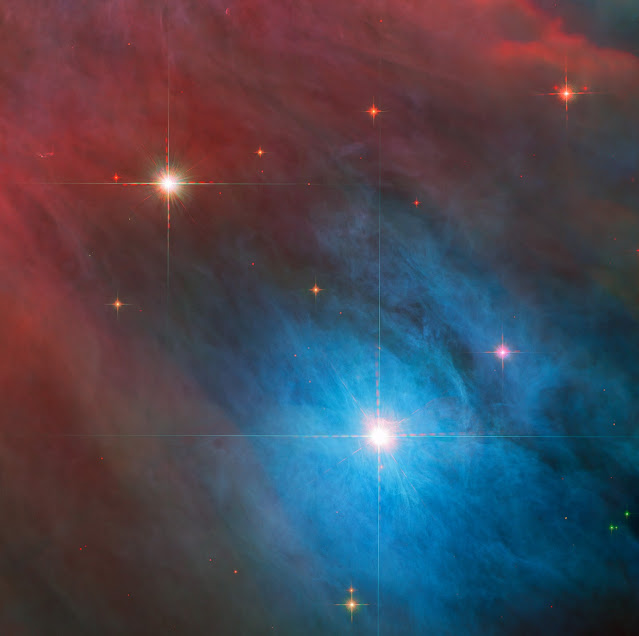Tempestuous Young Stars in The Orion Nebula | Hubble
V 372 Orionis is a particular type of variable star known as an Orion Variable. These young stars experience some tempestuous moods and growing pains, which are visible to astronomers as irregular variations in luminosity. Orion Variables are often associated with diffuse nebulae, and V 372 Orionis is no exception; the patchy gas and dust of the Orion Nebula pervade this scene.
This image overlays data from two of Hubble’s instruments. Data from the Advanced Camera for Surveys and Wide Field Camera 3 at infrared and visible wavelengths were layered to reveal rich details of this corner of the Orion Nebula. Hubble also left its own subtle signature on this astronomical portrait in the form of the diffraction spikes surrounding the bright stars. These prominent artefacts are created by starlight interacting with Hubble’s inner workings, and as a result they reveal hints of Hubble’s structure. The four spikes surrounding the stars in this image are created by four vanes inside Hubble supporting the telescope’s secondary mirror. The diffraction spikes of the NASA/European Space Agency/Canadian Space Agency James Webb Space Telescope, on the other hand, are six-pointed as a result of Webb’s hexagonal mirror segments and 3-legged support structure for the secondary mirror.
Credit: European Space Agency (ESA)/Hubble & NASA, J. Bally, M. Robberto
Release Date: Jan. 23, 2023
#NASA #ESA #Hubble #Astronomy #Space #Science #Stars #Star #V372Orionis #OrionVariable #VariableStar #OrionNebula #Orion #Constellation #Cosmos #Universe #SpaceTelescope #STScI #GSFC #UnitedStates #Europe #STEM #Education

No comments:
Post a Comment